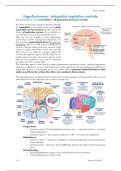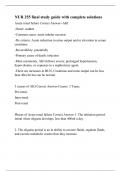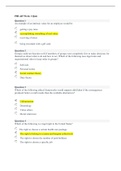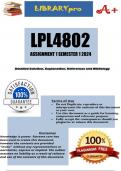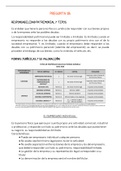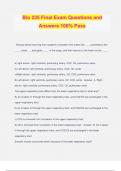Summary
Summary Hypothalamus - integrated vegetative controls
- Course
- Institution
Unravel the secrets of the hypothalamus and its pivotal role in regulating essential bodily functions, from temperature control to appetite management. Dive into the intricate neural pathways and hormonal signals that orchestrate our responses to environmental changes and internal needs. Discover h...
[Show more]
